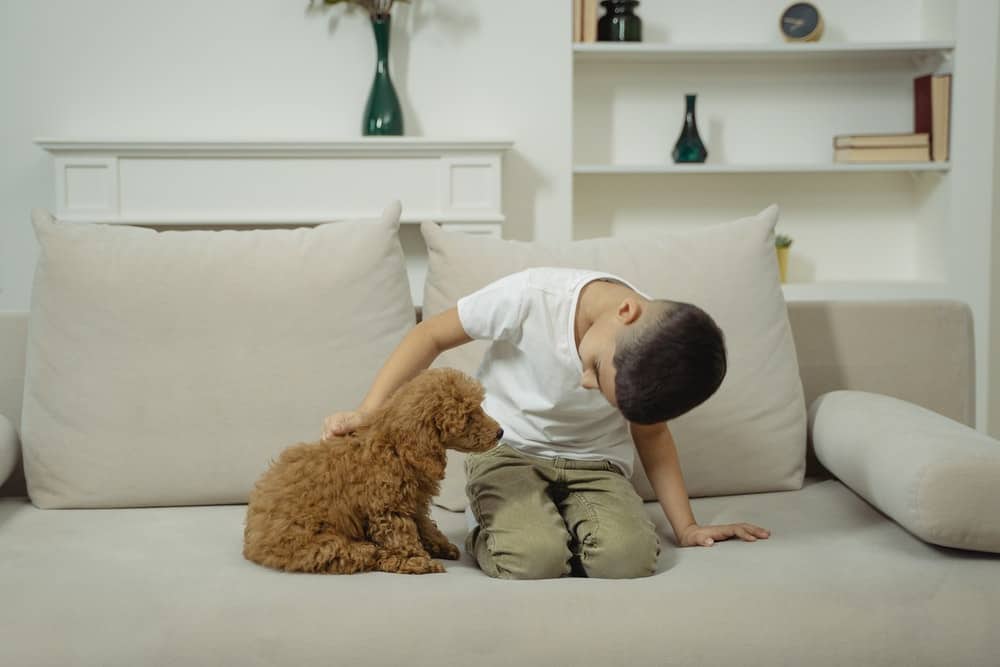Featured
When it comes to puppies, there’s no shortage of opinions out there. Some people believe that all puppies are cute and cuddly and make the perfect addition to any family, while others think that puppies are a lot of work and can be more trouble than they’re worth. If you’re thinking about getting a puppy for your kids, it’s essential to consider all of the pros and cons before making a decision. This blog post discusses five things you need to think about before bringing home a furry friend for your little ones!
Getting a puppy for the kids… what you need to consider

The cost of a puppy
Puppies are not cheap, and the costs of ownership go beyond the initial purchase price. You’ll need to factor in the cost of food, toys, vet care, vaccinations, spaying/neutering, and more. If you’re not prepared to commit to the financial responsibility of owning a puppy, it’s best to wait until your kids are older or consider adopting an adult dog instead.
In addition, if you’re thinking about getting a purebred puppy from a breeder, be prepared to pay upwards of $1000 or more. If you’re not prepared to commit to spending that much money on a puppy, consider adopting an adult dog from a shelter or rescue organization instead. There are many wonderful dogs of all ages waiting to be adopted into loving homes!
Puppies are also time-consuming creatures. They need plenty of exercise, socialization, and training in order to be well-behaved dogs. If you don’t have the time or patience to commit to raising a puppy properly, it’s probably best to wait until your kids are older or consider adopting an adult dog instead.
The size of your home
Puppies need plenty of space to run and play, so if you live in a small apartment or condo, it might not be the best environment for them. If you do have a yard, make sure it’s completely fenced in so that your puppy can’t escape and get lost. If you’re not able to provide a safe and spacious environment for a puppy, it’s best to wait until you’re in a better position to do so.
Training
Training and obedience classes are a must for both you and your puppy. It’s important to set the rules early on and be consistent with them. You’ll also want to make sure your puppy is comfortable around other people and animals. If you’re not prepared to commit to training your puppy, it’s best to wait until your kids are older or consider adopting an adult dog instead.
In addition, if you have small children, it’s important to make sure they understand how to interact with a puppy safely. For example, they should know not to pull on the puppy’s tail or ears and not to approach them when they’re eating or sleeping. Puppies are also known for being very active, so if you have young children, it’s important to make sure they’re supervised at all times when they’re around the puppy.
The right breed for your family
Not all dog breeds are created equal, and some are better suited for families with kids than others. If you’re not sure which breed of dog is right for your family, it’s best to consult with a professional before making a decision. Then, once you’ve chosen the right breed for your family, be sure to do your research on that particular breed so that you know what to expect in terms of temperament, energy level, size, and more.
Some popular kid-friendly dog breeds include a chocolate lab female puppy, Golden Retrievers, Beagles, Bichon Frises, and Cavalier King Charles Spaniels. However, there are many other great breeds out there that would make wonderful additions to any family! If you have your heart set on a particular breed of dog, but you’re not sure if it would be a good fit for your family, do some research before making a final decision.
Bigger breeds might not be the best choice for families with small children, as they can unintentionally knock them over or step on them. If you have your heart set on a bigger breed of dog, but you’re not sure if it would be a good fit for your family, do some research before making a final decision.
Some breeds are also known for being more high-maintenance than others, so if you’re not prepared to commit to regular grooming sessions, it’s best to choose a low-maintenance breed. If you have allergies, there are certain breeds that are known for being hypoallergenic. These breeds include Standard Poodles, Bichon Frises, and Shih Tzus.
Introducing a puppy to your kids
If you have small children, it’s important to take things slow when introducing them to the puppy. Allow them to approach the puppy on their own terms and make sure they understand how to interact with them safely. It’s also important to supervise all interactions between your children and the puppy, at least until you’re confident that everyone understands the rules and knows how to behave around the puppy.
If you have older children, they should be involved in the decision-making process from start to finish. They should help choose the right breed for your family, be involved in the training process, and be responsible for taking care of the puppy on a daily basis. This will help ensure that everyone is on the same page and that your new puppy is a welcomed addition to the family.

Final thoughts
In conclusion, there are a lot of things to consider before getting a puppy for your kids. It’s important to do your research and make sure you’re prepared for the commitment. But if you’re ready for a furry addition to your family, a puppy can bring years of joy and happiness! Just be sure to choose the right breed for your family, commit to training, and supervise all interactions between your children and the puppy. With a little preparation, you’ll be on your way to enjoying life with your new furry friend!





























